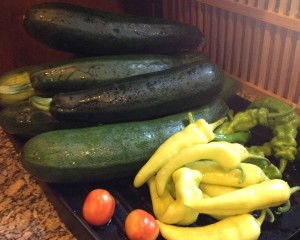
We celebrated Independence Day this past week. In addition to the swimming and the picnic food, we set off fireworks. That’s one of my son’s favorite things to do. I think it has something to do with the power of the explosives and the exhilaration the display causes everyone who’s watching. The ones we set off this year were pretty good, for backyard fireworks.

Scared Max
My family enjoyed them. One of my dogs did. The other was frightened, to the point he made himself sick. Maybe next year he’ll adapt better and enjoy the show like his brother does.
My nephew, when he was young, called it a “spectacular extravaganza in the sky.” It’s cuter if you hear it coming from the lispy voice of a two year old. He’s twenty-five now, but I’m pretty sure he still likes fireworks. I don’t know anyone (my youngest dog excluded) who doesn’t like them.

Growing up, Independence Day was spent at the local festival in my hometown. There were food stands, game booths, and live bands for days. Fireworks started around 9:00 on the fourth and lasted for about an hour, culminating in a grand finale that left us all breathless. Most people stayed at the festival to watch the show, but my family always went to my grandparents’ house. Their backyard faced the field where the fireworks were set off.
Those are some of my fondest memories of childhood.
There were the years when I was very young and quite frightened that the embers would land on me. I stood on the porch under the roof and peaked out at the ones that were above my head. There were the years when I was older and stood as close to the field I could, eagerly anticipating the next explosion, and the next, and the next.
We stopped going when my grandfather passed away. My grandmother’s heart wasn’t in it anymore, and if she wasn’t celebrating, it seemed wrong to enjoy the show without her.
As the years went on, I started dating the boy who became my husband. We’d watch the fireworks from his parents’ backyard. It always left me nostalgic for my younger years, but it was nice being with the boy I loved.

When we were married and had kids, we’d bring them to the festival and then to my in-laws’ house. They had a blast, and so did we. But time marches on, and things change. We moved away, and getting back for the festival became harder and harder. Finally we stopped going home for the festival, and now we live so far away and our kids’ schedules are so full, we couldn’t go home if we wanted to.
Not that it matters.
My town stopped having the Fourth of July Festival years ago, choosing instead to have only the church festival in August.
What’s the point of this story, you ask?
It’s so you understand that time marches on. Things change, people change, and you should embrace every opportunity that comes your way. Before long, loved ones will be gone, events will have changed or ceased to exist, and you might have to start your own traditions just to have any connection with your past. And connections with your past forge the person you are today.

Traditions change, but the emotions behind them remain.
My husband and I do what we can to keep family traditions alive for our kids—even when we have to change things to keep the traditions alive. Do you still keep old traditions alive for your family? Why don’t you share some traditions in the comments section below?
And writers, in addition to the family matters discussed above, consider how to apply these principles to your WIPs. Do you have family traditions that you can work into your characters’ lives? Have those traditions changed over the years? If so, for the better or worse? How do these traditions impact your characters? Don’t forget to include setting, senses, and character reactions. Maybe you could discuss a tradition you’re incorporating into your WIP in the comments section.







 Yesterday was the first day of the Advent Season. We lit the first purple candle on our advent wreath, sang verses one and two of O Come, O Come, Emmanuel at Mass, and have already finished decorating our home for Christmas. That is, after all, what the Advent Season, is all about. It’s the preparation for Christmas. Parents everywhere are baking and shopping, and if there are young ones in the home, lists are being made for Santa’s visit. But wait! Didn’t we forget something? Christmas is actually Christ’s Mass, and there isn’t really a Santa Claus Day, but there is a St. Nicholas Day, and it’s this week. Due to the commercialism of Christmas, it’s been overshadowed, but there are customs and traditions that are still alive, some of which I’ve kept going in my own family.
Yesterday was the first day of the Advent Season. We lit the first purple candle on our advent wreath, sang verses one and two of O Come, O Come, Emmanuel at Mass, and have already finished decorating our home for Christmas. That is, after all, what the Advent Season, is all about. It’s the preparation for Christmas. Parents everywhere are baking and shopping, and if there are young ones in the home, lists are being made for Santa’s visit. But wait! Didn’t we forget something? Christmas is actually Christ’s Mass, and there isn’t really a Santa Claus Day, but there is a St. Nicholas Day, and it’s this week. Due to the commercialism of Christmas, it’s been overshadowed, but there are customs and traditions that are still alive, some of which I’ve kept going in my own family.